#Sensorfusion
Explore tagged Tumblr posts
Link
#adaptivecompliance#anticipatoryinterfaces#biometricauthentication#edgeAIoptimization#hardware-AIintegration#neuralprocessingunits#RegulatorySandboxes#sensorfusion
0 notes
Text
#ADAS#AutomotiveRadar#AutonomousVehicles#SensorFusion#RadarTechnology#MobilityInnovation#AI#powerelectronics#powermanagement#powersemiconductor
0 notes
Text
#Advanced Driver Assistance Systems#ADAS#AutomotiveRadar#AutonomousVehicles#SensorFusion#RadarTechnology#MobilityInnovation#AI#electricvehiclesnews#evtimes#autoevtimes#evbusines
0 notes
Text
Non-Glass Capacitive Sensors Market - Forecast(2024–2030)
Non-Glass Capacitive Sensors Market Overview:
Non-Glass Capacitive Sensors Market size is estimated to reach $35 billion by 2030, growing at a CAGR of 5.3% during the forecast period 2024–2030. The continuous growth of the electronics industry worldwide is a significant driver for the Non-Glass Capacitive Sensors market. The increasing demand for touch-sensitive devices across various electronic applications, including smartphones, tablets, and consumer electronics, fuels the need for these sensors. This trend is expected to boost the growth of the Non-Glass Capacitive Sensors Market during the forecast period.
The pervasive adoption of touch-sensitive devices across multiple industries, including smartphones, tablets, and consumer electronics, is a primary driver for the increasing demand for Non-Glass Capacitive Sensors. According to the ‘A call to action for broadening and deepening electronics manufacturing’ report by the Ministry of Electronics and IT, India aims to achieve electronics manufacturing worth US$ 300 billion by 2026. These sensors play a pivotal role in providing responsive and intuitive touch interfaces, meeting the rising consumer expectations for interactive technology. These factors positively influence the Non-Glass Capacitive Sensors industry outlook during the forecast period.
Sample Report:
Miniaturization and Thin-Film Technology: As devices become smaller and sleeker, non-glass capacitive sensors are being miniaturized. Thin-film technology allows these sensors to be integrated into wearable devices, curved displays, and other compact applications
Integration with Advanced Technologies: Non-glass capacitive sensors are increasingly being combined with other technologies such as fingerprint recognition, haptic feedback, and force sensing. This integration enables more multifunctional and enhanced user experiences,
Increased Demand for Touch-Sensitive Interfaces: Driven by the rise of smartphones, tablets, and other touch-sensitive electronics, there is growing demand for these sensors across consumer electronics, automotive, and healthcare industries
Automation and IoT Applications: Non-glass capacitive sensors are being utilized in industrial automation and Internet of Things (IoT) applications to detect objects, enabling smarter and more efficient production processes
Inquiry Before Buying :
Durability and Robustness: These sensors offer greater durability than their glass counterparts, making them ideal for harsh environments where resistance to shocks and vibrations is critical, such as in industrial and automotive applications
Electronics Segment to Register the Fastest Growth
In the Non-Glass Capacitive Sensors Market analysis, the Electronics segment is estimated to grow with the highest CAGR of 6.1% during the forecast period 2024–2030. The Electronics sector stands out as the fastest-growing end-use industry within the Non-Glass Capacitive Sensors market, fueled by a surge in demand for touch-sensitive interfaces across a spectrum of devices. With the proliferation of smartphones, tablets, and wearable gadgets, capacitive sensors have become integral components, driving innovation and enhancing user experiences. The consumer electronics boom, particularly in regions like Asia-Pacific and North America, has created a robust market for Non-Glass Capacitive Sensors. According to India Brand Equity Foundation, The government intends to make electronics one of the top three export categories by 2025–26.
Schedule a Call:
A US$ 1 trillion digital economy aim is expected to enhance demand for electronics, which is expected to be approximately US$ 180 billion by 2025–26. Moreover, the automotive industry’s increasing integration of touch panels and interactive displays contributes significantly to the sector’s expansion. The versatility of capacitive sensors in applications ranging from touchscreens to touch-sensitive buttons positions the Electronics sector as a key driver, shaping the market’s trajectory.
Increasing demand for touch-sensitive devices propelling the market growth.
The increasing demand for touch-sensitive devices is a major driver for the growth of the non-glass capacitive sensors industry. As the global market for electronics expanding, there is a parallel surge in the need for touch-sensitive technologies. Non-glass capacitive sensors play a crucial role in meeting this demand by providing reliable and responsive touch capabilities. For example, According to Invest India, India is a significant worldwide participant in the electronics manufacturing business.
The country is rapidly evolving into a powerhouse for electronics production, with the industry anticipated to reach $ 300 billion by 2025–26. This expansion can be ascribed to the government’s efforts to promote local electronics production, which has resulted in greater investment and job creation. The versatility of these sensors makes them integral to various applications, including smartphones, tablets, and other interactive devices. Their ability to deliver durable and high-performance touch solutions positions them as key components in the evolving landscape of touch-enabled electronics.
Buy Now:
Integration issues hampering the market growth.
Integration issues pose a significant market challenge in the non-glass capacitive sensors industry, hindering seamless adoption and functionality. As the demand for capacitive sensors intensifies, particularly with the widespread use of smartphones and tablets, ensuring effective integration becomes paramount. The complexity of integrating these sensors into various devices, coupled with the continuous evolution of technology, presents hurdles for manufacturers and end-users alike. Challenges in interoperability and compatibility can arise, impacting the overall performance and reliability of non-glass capacitive sensors.
For more about Non-Glass Capacitive Sensors Market click here
#non-glasscapacitivesensors#touchsensing#electronicsmarket#wearabletech#automotiveinnovation#industrialautomation#haptics#iot#aiintegration#miniaturization#sensorfusion#gesturecontrol#smartdevices#touchscreens
0 notes
Text
Sensor Fusion Course
The Sensor Fusion Engineer Nanodegree program consists of four courses that teach the fundamentals of sensor fusion and perception for self-driving cars. The program covers lidar, radar, camera, and Kalman filters, and includes lessons on working with real-world data, filtering, segmentation, clustering, and object tracking. In addition, students will work on a capstone project that involves building a complete sensor fusion pipeline for autonomous vehicles. Upon completing the program, graduates will have the skills and knowledge necessary to design and implement sensor fusion systems for self-driving cars.
✅ 3 Months
✅ Real-World Projects.
What You Will Learn
✅ Lidar Obstacle Detection
✅ Camera
✅ Radar
✅ Kalman Filters
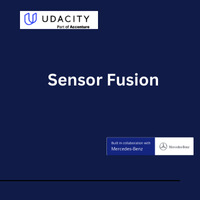
0 notes
Text
Image It! Pressure It! The Next Wave of Wearable Sensor Technology
The world of wearable sensors! This booming market thrives on advancements in motion tracking, health monitoring, and image recognition. Explore which sensor types lead the pack, how innovation miniaturizes and combines data, and the top players
Wearable Sensors: Trends by Type The wearable sensor market is booming, driven by the increasing demand for health and fitness trackers, smartwatches, and other connected devices. But within this market, different sensor types play significant roles, each with its own growth trend and technological advancements. Let’s look at some important concerns to understand the relevant situation: 1.…

View On WordPress
#FitnessTrackers#FutureofWearables#HealthTech#ImageSensors#miniaturization#MotionTracking#SensorFusion#SensorTechnology#WearableSensors#WearableTech
0 notes
Text
Error Detection And Correction In CAN
June 3, 2024
by dorleco
with no comment
eMOBILITY CONTROLS
Edit
INTRODUCTION
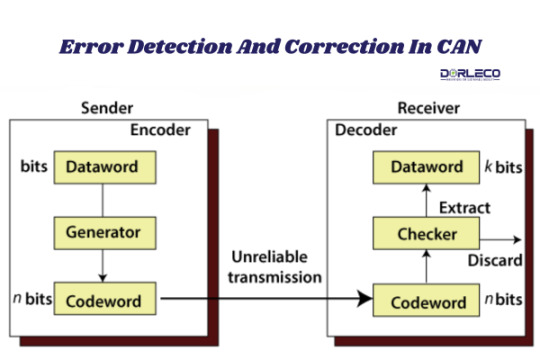
Communication is vital in the ever-evolving world of automotive technology. Modern automobiles are outfitted with a variety of technical components that must work seamlessly together. One of the foundations of this communication is the Controller Area Network (CAN), a robust and dependable protocol that allows data to be sent across different components. However, mechanisms for error detection and correction in CAN are required to maintain this reliability. In this blog article, we will go extensively into the topic of error detection and repair in CAN, understanding how important these procedures are in ensuring the safety and dependability of modern vehicles.
The significance of CAN in contemporary automobiles
Before we go into error detection and correction in CAN, let’s look at how it works in modern automobiles.
What exactly does CAN stand for? The Controller Area Network, a robust serial communication protocol, enables vehicle electronic control units (VCUs) to connect. Why is it important? By allowing real-time data sharing between ECUs in charge of activities like as engine control, transmission management, and safety systems, CAN has emerged as the core of automotive communication.
1. The vulnerability of CAN.
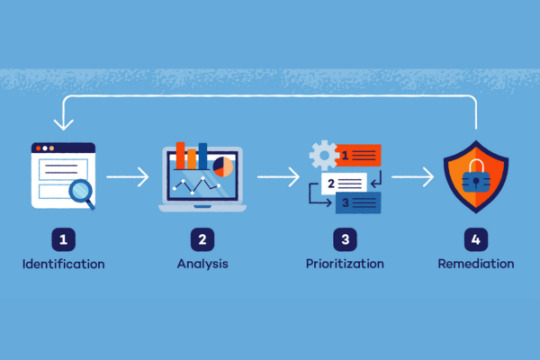
Even though CAN is extremely reliable, errors can still occur. Several factors can result in communication mistakes, including:
Noise and interference: The electromagnetic interference created by multiple electrical components in the vehicle environment, which is noisy, can contaminate CAN signals. Defects in transceivers or other hardware components can cause CAN communication problems.
Electromagnetic Compatibility (EMC): Communication issues might arise when different ECUs and components are not compatible.
2. Basics of Error Detection in CAN
Various types of error detection CAN mechanisms are utilized to ensure dependability.
The Cyclic Redundancy Check (CRC) algorithm generates a checksum based on the transmitted data. To detect errors, the receiving node computes its CRC and compares it with the transmitted CRC.
The FCS field of the CAN frame, like the CRC, contains checksum information that is used to detect errors.
Bit Stuffing: You can use bit stuffing to ensure that the sender and receiver are in sync. The bit packing pattern may deviate, indicating an issue.
3. Error Correction in the Can
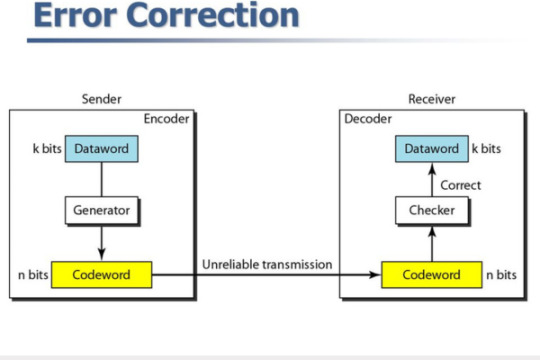
Error Detection in CAN is necessary, but it is not always sufficient. Error-correcting methods go one step further:
Retransmission: If an error is detected, the sender sends the message again. This ensures that the message is appropriately delivered to its intended recipient.
The CAN protocol includes an acknowledgment mechanism that allows the receiver to acknowledge that a message was properly received. If no acknowledgment is received, the sender retransmits, assuming an error.
4. Error Recovery and Handling.
It is critical to understand how to handle CAN faults and recover to assure system dependability.
Error Flags: CAN uses error flags to identify a variety of issues. These warning flags help you discover and fix problems. Error Passive and Error Active Modes: Depending on the number of errors detected, CAN nodes can switch between error passive and error active modes. This reduces the risk that errant nodes may disrupt the network as a whole.
5. Advanced Error-handling Strategies
Advanced error-handling mechanisms are occasionally utilized to ensure continuous communication.
Fault-Tolerant CAN (FTCAN) is a redundancy-based method that uses two CAN buses running concurrently to ensure that communication continues even if one bus fails. Flex Ray is a communication standard for automotive networks that improves error management; however, it is not a CAN protocol.
6. Security and Error Detection in CAN.
As linked and autonomous vehicles become more common, security concerns have grown. It is vital to understand how error detection relates to security.
Cyber security: To avoid unwanted access and manipulation, robust error detection in CAN and repair mechanisms are required. Malicious attacks on CAN networks are a possibility, emphasizing the need for these measures.
Intrusion Detection Systems: Advanced intrusion detection systems are being integrated into CAN networks to identify and respond to security threats.
7. Future Error Detection and Correction in CAN
The Future of Error Detection As vehicles get more intricate and networked, there are exciting improvements in CAN and CAN correction.
AI-based machine learning algorithms can help discover and rectify problems in real-time, as well as adjust to changing situations and threats.
Blockchain Technology: Researchers are looking into how blockchain may be used for tamper-proof and secure data collection and transfer.

Conclusion
The Heartbeat of Contemporary Vehicles
In conclusion, the Controller Area Network (CAN) is the unsung hero of modern automobiles because it enables critical electrical component communication. Error detection in CAN and corrective methods are unheralded heroes who fight behind the scenes to ensure that this communication is trustworthy, secure, and safe. The importance of effective error management in CAN will only grow as vehicles evolve and incorporate new technology. It’s critical to get from point A to point B safely, effectively, and with the confidence that all of your vehicle’s systems are working properly. This is made feasible by error detection in CAN and repair, which will remain critical to the industry’s future progress.
#CANKeypads#Autonomousdriving#Motorcontrolstrategies#emobilitycontrols#Dorleco#VCUProducts#Sensorfusion#Programablevcu
0 notes
Text
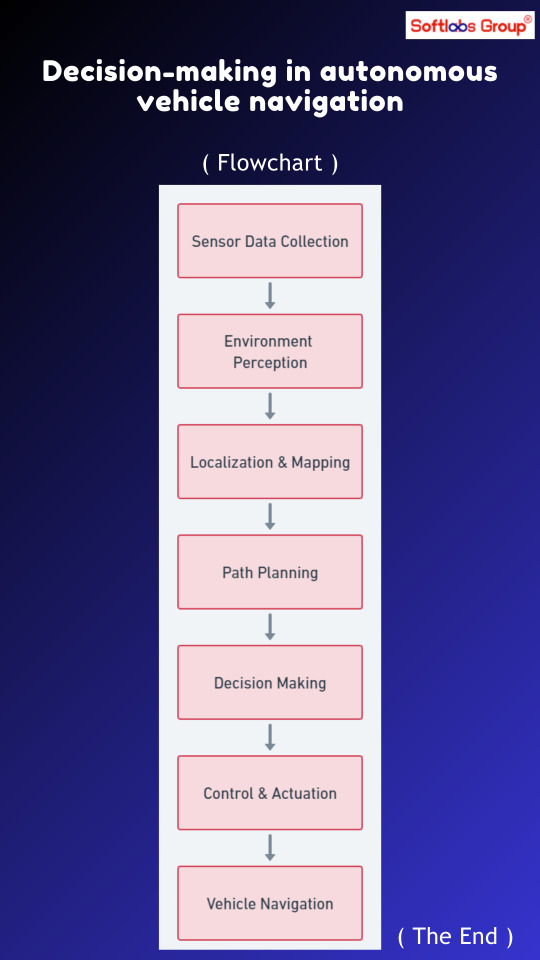
Explore the decision-making process in autonomous vehicle navigation with our informative flowchart. Follow steps including perception, localization, mapping, path planning, and control. Simplify the complex process of ensuring safe and efficient navigation for autonomous vehicles. Perfect for engineers, researchers, and enthusiasts in autonomous driving technology. Stay informed with Softlabs Group for more insights into the future of transportation!
0 notes
Text

#SignalProcessing #EmergingTechnologies #ImageFormation #DigitalSignalProcessing #Bigdataanalysis #Sensorfusion #Videoanalysis #Imageprocessing Welcome to CSIP 2025 12th International Conference on Signal Processing (CSIP 2025) June 21 ~ 22, 2025, Sydney, Australia https://inwes2025.org/csip/index Paper Submission Authors are invited to submit papers through the conference Submission System by June 07, 2025(Final Call). Submission Link:https://inwes2025.org/submission/index.php Contact Us: [email protected]
0 notes
Text
Automotive LIDAR Security Market Set for Explosive Growth, Reaching $15.2B by 2034
Automotive LIDAR Security Market is accelerating fast, powered by the rise of autonomous vehicles and demand for advanced safety features. LIDAR (Light Detection and Ranging) plays a pivotal role in enabling real-time 3D mapping, object detection, and collision avoidance — core components of ADAS and self-driving systems.
To Request Sample Report : https://www.globalinsightservices.com/request-sample/?id=GIS33030 &utm_source=SnehaPatil&utm_medium=Article
Solid-state LIDAR leads the market due to its affordability, durability, and seamless integration into modern vehicle designs. Mechanical LIDAR holds the second spot, prized for its precision in mapping and navigation. North America dominates this space, driven by heavy investments and a strong regulatory push for autonomous vehicle development. Europe closely follows, with countries like Germany spearheading innovation.
Industry leaders such as Velodyne, Innoviz Technologies, and Luminar Technologies are shaping the market with cutting-edge tech — improving resolution, reducing costs, and optimizing integration. Applications stretch beyond just vehicles, impacting traffic management and smart city infrastructure.
As AI and machine learning continue to enhance LIDAR’s functionality, the market outlook is strong. Challenges like high costs and complex integration persist, but ongoing innovations are paving the way for widespread adoption and smarter, safer mobility.
#lidar #automotive #autonomousvehicles #adas #vehiclesafety #lidartechnology #solidstatelidar #mechanicallidar #hybridlidar #3dmapping #objectdetection #collisionavoidance #smartmobility #aiintransport #machinelearning #smartcars #vehicletech #lidarsensors #velodyne #innoviz #luminar #futureofdriving #autonomousmobility #smartcities #connectedcars #regtech #transporttech #mobilitysolutions #sensorfusion #automotiveinnovation #selfdrivingtech #vehiclenavigation #techdriven #oemtech #automotiveelectronics #lidarsecurity
0 notes
Text
AI & Self-Driving Cars: A $25.8B Industry by 2034 – The Future is Now!
AI in Autonomous Vehicle Sensors Market is accelerating towards a smarter, safer future, integrating AI-driven LiDAR, radar, and camera systems to enhance vehicle perception and decision-making. These cutting-edge sensors enable autonomous vehicles to navigate complex environments, ensuring efficiency and safety while reducing accidents and optimizing traffic flow. 🚦
To Request Sample Report : https://www.globalinsightservices.com/request-sample/?id=GIS33019 &utm_source=SnehaPatil&utm_medium=Article
🔍 Market Overview LiDAR leads the market, offering unmatched accuracy in environmental mapping and obstacle detection. Camera sensors follow closely, benefiting from advancements in AI-driven image processing. Radar sensors, while slightly behind, are gaining traction due to their reliability in adverse weather conditions.
🌎 Regional Insights
North America dominates, driven by massive investments and technological innovation in autonomous vehicle development.
Europe ranks second, benefiting from stringent safety regulations and a strong automotive industry.
Key players: The United States and Germany spearhead advancements, fostering strategic partnerships to enhance sensor accuracy and AI integration.
📊 Market Segmentation & Key Trends
Type: LiDAR, Radar, Ultrasonic, Camera, Infrared Sensors
Application: Passenger Vehicles, Commercial Vehicles, Ride-Sharing, Logistics
Technology: Machine Learning, Deep Learning, Computer Vision, Sensor Fusion
Functionality: Perception, Localization, Mapping, Decision-Making
Deployment: Cloud-Based, Edge-Based, Hybrid
🚀 Future Outlook The LiDAR segment dominates, while camera-based sensors hold 30% of the market, followed by radar sensors at 25%. Major players like Velodyne Lidar & Luminar Technologies are driving innovation, while regulatory frameworks in the US & EU shape safety standards. 🚘 Despite high production costs, increased R&D investments and AI integration will fuel growth, making autonomous driving a reality!
#autonomousvehicles #aiinsensors #lidartechnology #radarsensors #camerasensors #sensorfusion #driverlesscars #futureofmobility #smarttransportation #aiinmobility #deeptech #machinelearning #computervision #automotiveinnovation #robotaxis #selfdrivingcars #nextgentech #avtechnology #smartcities #connectedcars #automateddriving #aiintheautomotiveindustry #techforgood #vehicletechnology #innovationdriven #ridesharing #logisticsautomation #autonomousfleets #smartmobilitysolutions #evfuture #mobilitydisruption #automotivesensors #mappingtechnology #cloudcomputing #aiinlogistics #edgecomputing
Research Scope:
· Estimates and forecast the overall market size for the total market, across type, application, and region
· Detailed information and key takeaways on qualitative and quantitative trends, dynamics, business framework, competitive landscape, and company profiling
· Identify factors influencing market growth and challenges, opportunities, drivers, and restraints
· Identify factors that could limit company participation in identified international markets to help properly calibrate market share expectations and growth rates
· Trace and evaluate key development strategies like acquisitions, product launches, mergers, collaborations, business expansions, agreements, partnerships, and R&D activities
About Us:
Global Insight Services (GIS) is a leading multi-industry market research firm headquartered in Delaware, US. We are committed to providing our clients with highest quality data, analysis, and tools to meet all their market research needs. With GIS, you can be assured of the quality of the deliverables, robust & transparent research methodology, and superior service.
Contact Us:
Global Insight Services LLC 16192, Coastal Highway, Lewes DE 19958 E-mail: [email protected] Phone: +1–833–761–1700 Website: https://www.globalinsightservices.com/
0 notes
Link
#biometricauthentication#ComputerVision#DigitalIdentity#edgecomputing#frictionlesscommerce#retailinnovation#sensorfusion#SmartCities
0 notes
Text
The AIoT Revolution: A Mind-Blowing $1.2 Trillion Market by 2034! 🤯
Artificial Intelligence of Things (AIoT) Market integrates AI-driven intelligence into IoT devices, enabling autonomous decision-making, predictive analytics, and real-time optimization. AIoT applications span smart homes, industrial automation, autonomous vehicles, and healthcare, revolutionizing operations with intelligent, interconnected ecosystems.
To Request Sample Report : https://www.globalinsightservices.com/request-sample/?id=GIS31504 &utm_source=SnehaPatil&utm_medium=Article
Market Trends & Growth:
Industrial IoT (45% market share) leads the AIoT landscape, driven by automation and predictive maintenance.
Consumer IoT (30%) follows, fueled by rising demand for smart home technologies and connected devices.
Healthcare AIoT (15%) is growing, with applications in remote monitoring and AI-powered diagnostics.
Automotive AIoT (10%) supports innovations in autonomous vehicles and smart transportation systems.
Regional Insights:
North America dominates the AIoT market, benefiting from advanced R&D, early adoption, and strong infrastructure.
Europe ranks second, driven by regulatory support and smart technology innovations.
China emerges as a key player, propelled by government initiatives and a booming tech sector.
Future Outlook:
With increasing AIoT R&D investments, strategic collaborations, and edge AI advancements, the market is poised for exponential growth, transforming industries, connectivity, and automation.
#aiot #artificialintelligence #internetofthings #machinelearning #edgecomputing #predictiveanalytics #industrialiot #smarthome #aiinmanufacturing #smartautomation #cloudiot #deeplearning #computervision #iotsecurity #connecteddevices #smarttransportation #autonomoussystems #aiinhealthcare #industrialautomation #aiinenergy #digitaltwins #cyberphysicalsystems #realtimedata #remotemonitoring #smartgrid #sensorfusion #bigdataanalytics #aiotplatforms #cloudcomputing #5gconnectivity #aiinretail #automatedmaintenance #aiotsecurity #iotdevices #aiinlogistics #intelligentnetworking #autonomousvehicles #aiinagriculture #wearableai #smartindustries #iotgovernance
Would you like additional details on specific AIoT applications or i
0 notes
Text
@us_stratcom .@us_stratcom .@usairforce .@usnavy .@usmc @usarmy .@lockheedmartin .@northropgrumman @boeingdefense ihave stumbled upon an arcade airwar simulation 2vs2 modern vs su57 itis arcade thereis no way an su57 r77m can easily intercept an s m6 but not an airframe of a typhoon or an f14arcade at 20something miles the only options besides chaff and low altitude evasive move is j ammer on or off itseems like aeh aeh dude aeh shxhithead dude ey simulations and iwonder what the r e a l simulations look: the play of r a n g e d comparative advantages suchas stealth mea n no jamming thereon passive firing of older ranged platforms while as sensor closer undetected comparative advantage ranged islikely hitting eachother off at 50miles 100miles 40miles radars and sensorfusion closer itis the findable areas for lidar +electrooptical sensor fusion ie the warfare of the realdeal on range stealth and sensorfusion becomes lidar iir dominant in specific ranges which the airtactic should avoid there on itis how allaspect iir with lidar is jammed shaken where the arcade shows no location but mfd s letalone ho w effective the missile andmove gets. dude fire n forget aeh dude and stay over terrain that decoys you and serious icbm midcourse capable sams not hitting at 6000feet 15miles 20miles geeeeesh when a sm6 is interceptable and ineffective against a single su57 jammer and the realdeal is ineffective stealth onsome proximity then hal f of the navalvessels are toast as only one jet has toget through letalone withits payload isuspect itis plain arcade stuff or did ukraine war show some unp leasant truths onthe old platforms
@us_stratcom .@us_stratcom .@usairforce .@usnavy .@usmc @usarmy .@lockheedmartin .@northropgrumman @boeingdefense ihave stumbled upon an arcade airwar simulation 2vs2 modern vs su57 itis arcade thereis no way an su57 r77m can easily intercept an sm6 but not an airframe of a typhoon or an f14arcade at 20something miles the only options besides chaff and low altitude evasive move is jammer on or…
0 notes
Text
Miku Pro vs Miku Baby Monitors: Which is best for your needs?

The Miku Pro vs Miku Monitor comparison article should help give parents more information on which model would work best for their family's needs! Read on below to learn about these two cameras and decide which one might be right for you! The quick answer to Miku Pro vs Miku Baby Monitors Miku Pro is more advanced with larger sensor size, wider field of view, and SensorFusion technology, but Miku Baby Monitors might be a more affordable choice with ample features for your baby's monitoring needs. What is the difference between the Miku Pro and the regular Miku? It's never too early to start thinking about baby monitors. With Miku Pro, you can get the best of both worlds: a quality product and peace of mind. But what if there were another option? Some parents prefer Miku Baby Monitors for their children because they are more affordable and have some additional features that make them worth considering. And with so many options on the market, how do you know which one will be right for your needs? In conclusion, while the Miku Pro Smart Baby Monitor has some fantastic features that offer peace of mind and ease of use, it's also important to be aware of its limitations, particularly regarding false alarms and connectivity issues. Overall, it's a robust tool for parents who want to keep a close eye on their baby’s well-being. What is the difference between the Miku Pro and the regular Miku? The Miku Pro is a little more expensive but it has higher quality audio, better range, and battery life than the regular Miku. The speaker on the Miku baby monitors can be used as an intercom to communicate with your child from another room or when you're in different locations. You'll also get two receiver units instead of one like with the other product line because many people purchase this monitor for their home and office so they need two receivers. Miku Smart Baby Monitor FAQ The Miku Pro does not have an evening light. Yes, the Miku Pro is HSA as well as FSA eligible. The Miku App can be linked to several Miku monitor gadgets, as well as users can quickly switch backward and forward between video feeds. Device positioning and also nearby individuals, pets, or noises can cause incorrect readings, so we advise having just one Miku monitor in each space for the most precise breathing pattern surveillance. The Miku App can likewise be used with an iPad or various other tablets. We do not presently use Alexa or Google Assistant assimilation. The Miku Pro Smart Baby Monitor and Wall Mount is a device that lets you stay connected to your baby from anywhere in the world. You can talk to them, have two-way audio with them, and monitor their breathing rates and heart rate variability even during sleep times which helps detect abnormal occurrences (like sleep apnea).Connectivity issues are no worries since they've been fixed in this updated version of the Miku Pro. The ability to play soothing music throughout the day along with timers will make it easier for your little one as well as help calm you down too when things get hectic around the house! If what you're looking for is an affordable way to keep in contact with your baby while on the go then try out our Miku Smart Baby Monitor is a Wi-Fi baby monitor that works with your smartphone to track breathing, movement, sleep patterns and nursery conditions such as temperature and humidity. The device also offers HD video and sound sharing from the app on your phone. With Miku's tamper-resistant Crypto Chip technology you'll have peace of mind when it comes to data security. Miku App FAQ Miku App Miku App FAQ Miku App Compatibility Miku Pro vs Miku baby monitor review https://www.youtube.com/watch?v=fuii7CGEMAI Miku Pro vs Miku Baby Monitor I am talking all about our Miku monitored. This is Miku Pro. When I started the list of things that I would need before I was baby arrived, the top-quality monitor was a number one priority that we had. And just like every first-time parent, I went into extensive research. I dive right into it, weigh all the pros and cons read every review about monitors that are currently available on the market. After all, Miku ended up being my first choice, I've been using Miku for about a year. And just before I talk about the new and improved Mika Pro, I just want to share with you guys how it was for our first month of not having me. And they were hard. All I could remember is us hovering over his bassinet, making sure he was breathing. So when Jay slept, we didn't. And I also feel like that didn't exactly help me to recover from really hard labor. And C-section I even remember at one point Todd was gone and I was so tired that I actually had to pinch myself just to make sure I stay awake and keep checking on him because we were so afraid of SIDS that said when we got over Migos, we were so happy. It made a world of difference for us. Miku Pro vs Miku Baby Monitor Review We finally could sleep and rely on the monitor to make sure that our little guy was safe. Who knew what I was trying to say is that apart from minimalistic design, lots of lullabies, and white noise rate speakers. The main reason why I love this monitor is that it's tracking real-time breathing as I'm doing right now on my phone just last night, Todd and I were saying how credible the technology is in the middle of a dark room. This baby monitor could detect breathing and also show you a very clear picture of your baby sleeping. Like how cool is that? The other reason why I like my group, unlike any other moderators on the market, Miku does not require anywhere bowls in order to detect your baby's breathing. And this one is big for me because honestly, I feel like wearables are not practical. It's just something extra that you have to do before you put your baby down for sleep or nap and down the line, you would have to buy another wearable. It's just something to consider in terms of costs. And now in Miku Pro offers a, a wider field of view. Review Miku Pro I was happy with the previous version. It was plenty that you get to see when you install the monitor. I guess this will come and play when justice is blending, and his crib escapes, I guess another fun upgrade. The LED light now can be dimmable. So before we did not use honestly, the light because it was a little too bright. And now it's really nice that you can control the rightness yourself and other upgrades that you can pinch to zoom the image. So you can see your baby a little closer personally, didn't miss that option before, because of course, with the monitors that do not track the breathing, you do need to zoom in and check your baby's breathing with Miku. comparison Miku Pro vs Miku Baby Monitor There's no need to do that, but I guess it's fun to watch your baby snooze so you can zoom in and see his or her cute face. And it's been helpful on a few occasions. Sometimes when he loses his soother, I could actually zoom in and check out where it went overall. We were pretty happy with our Miku before and now you meet GoPro offers some really cool features that I really like because the downside of this monitor would be the fact that it's running a little bit on the pricier side, but they do offer to finance. And the fact that you don't have to pay for a subscription, do you do not need to have any wearables has tons of cool features. Like I mentioned before, I ultimately find this baby monitor of great value. So I would certainly recommend it. Thank you for watching this video. Essential Baby Monitor Guides As a seasoned pediatrician and a mother of two, I understand the critical role baby monitors play in the safety and well-being of your child. With an array of options available in the market, I've handpicked the best resources to guide you through your decision-making process: - Best Travel Baby Monitor No Wi-Fi: If you're always on the move and prefer a non-Wi-Fi monitor for secure, uninterrupted connection, this guide will help you discover the best travel baby monitors that require no internet. - Best Baby Monitors for Twins: Monitoring twins can be a challenging task. This guide provides a comprehensive list of the best baby monitors featuring dual cameras for efficiently monitoring two rooms or twins. - Best Baby Monitor with Camera: Looking for a baby monitor with high-quality video capabilities? This guide will help you identify the top baby monitors with advanced camera features, ensuring you keep a close eye on your little one at all times. - Best Baby Movement Monitor: Baby movement monitors can provide an extra layer of reassurance by tracking your baby's subtle movements. This guide offers a rundown of the best baby movement monitors in the market. These guides are designed to make your buying decision easier by providing detailed product reviews, comparison charts, and useful purchasing advice. Make sure to check them out for a stress-free shopping experience. Read the full article
0 notes
Text
DroneShield Limited is pleased to launch SensorFusionAI (SFAI), a sensor-agnostic, 3D data fusion engine for complex environments. DroneShield has developed a true AI-based sensorfusion engine, initially for its own DroneSentry-C2 command-and-control system, including all common drone detection modalities (RF, radar, acoustics, camera). This separation enables third party C2 manufacturers (including primes) to add SFAI to their C2 systems, on a subscription basis (SaaS), thus improving the performance.
DroneShield Limited is pleased to launch SensorFusionAI (SFAI), a sensor-agnostic, 3D data fusion engine for complex environments. DroneShield has developed a true AI-based sensorfusion engine, initially for its own DroneSentry-C2 command-and-control system, including all common drone detection modalities (RF, radar, acoustics, camera). This separation enables third party C2 manufacturers…
View On WordPress
0 notes